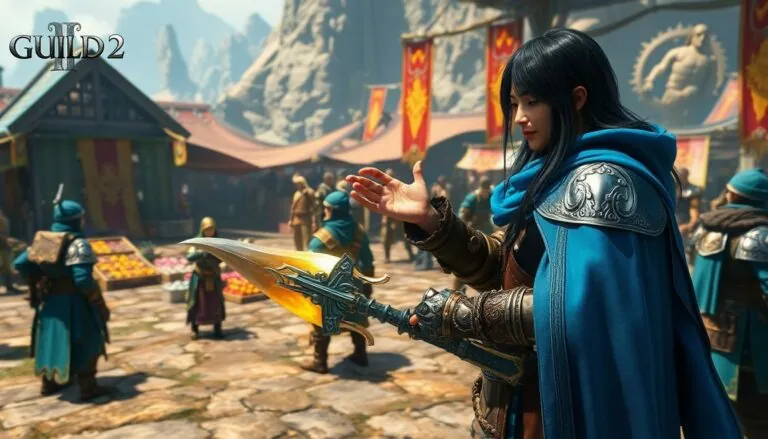Table of Contents
ToggleThe Wii U might not have taken the gaming world by storm like its successor, but it still holds a special place in the hearts of many. Picture this: cozy nights spent battling friends in “Super Smash Bros” or racing through “Mario Kart.” But what happens when those nostalgic servers go dark? It’s like finding out your favorite pizza place closed down—devastating!
Overview of Wii U Servers
Wii U servers played a crucial role in connecting gamers to online experiences. They facilitated multiplayer gaming, community engagement, and regular updates for popular titles like “Super Smash Bros” and “Mario Kart.” Users relied on these servers for obtaining downloadable content, which enhanced their gaming experiences.
Server maintenance proved vital for ensuring stable connections. Multiplayer modes required real-time interaction, making it essential for servers to function smoothly. When the servers were operational, players enjoyed seamless gameplay and access to competitive modes.
Unfortunately, as time progressed, Nintendo made the decision to shut down Wii U servers. The shutdown affected many online features, restricting players’ ability to connect with friends or access online modes. Gamers experienced a sense of loss, as many cherished moments relied on these servers.
Although Nintendo shifted focus to newer consoles, the impact of Wii U servers remains significant. Nostalgia for the unique experiences hosted on these servers lingers within the gaming community. Some enthusiasts still reminisce about the vibrant online environment that the Wii U fostered.
Significantly, the demise of these servers highlights the importance of digital preservation in gaming. Gamers express concern over the availability of online experiences and the long-term sustainability of game servers. Overall, Wii U servers contributed to a rich era in gaming, connecting players and creating lasting memories.
Evolution of Wii U Servers
The Wii U servers have undergone significant changes since their inception. These servers played a crucial role in enhancing the overall gaming experience.
Early Launch and Performance
The early launch of Wii U servers introduced players to online features, including multiplayer options and exclusive downloadable content. Initial performance showed promise, facilitating smooth gameplay and connecting gamers around the world. Servers hosted popular titles, allowing friends to engage in competitive matches and collaborate on community challenges. Issues with stability occasionally arose, yet the overall experience met player expectations for the time. Enthusiasts embraced the novelty of online play, contributing to the success of the Wii U platform.
Updates and Changes Over Time
As time progressed, Nintendo released updates to enhance server functionality. Changes included addressing performance issues and expanding multiplayer capabilities. Enhanced server stability ensured reliable connections during peak usage times. Frequent game updates kept the library fresh, enticing players to return. Community feedback shaped subsequent updates, demonstrating Nintendo’s commitment to improving player experience. Despite challenges, the evolution of Wii U servers reflected a response to the needs of the gaming community throughout the console’s lifecycle.
Current Status of Wii U Servers
Wii U servers have undergone significant changes, impacting players’ access and engagements. The shutdown affected many aspects of online gaming, making current availability a crucial topic for the community.
Availability and Accessibility
Wii U servers are no longer operational, which means online features for games, including multiplayer modes and downloadable content, are inaccessible. Players enjoyed access to these features, enhancing their gameplay experiences. The discontinuation limits gamers’ ability to connect with others online. Game titles like “Super Smash Bros” and “Mario Kart,” which relied heavily on server functionality, now have diminished online capabilities. Formerly, gamers connected globally, but now their interactions are restricted. Those seeking to revisit classic titles face barriers to community-driven experiences. As the servers became inactive, a wave of nostalgia plagued many who reminisced about the vibrant gaming environment once present.
Player Community Engagement
Player engagement was vibrant during the Wii U’s operational years, enabling active community participation. Gamers collaborated through online features, enhancing their experiences with friends and opponents globally. Regular updates welcomed feedback, and improvements reflected players’ preferences. Forums and social media platforms became hubs for sharing gameplay experiences and strategies. With the server shutdown, this community engagement suffered. Players missed vibrant multiplayer sessions and unique events that fostered camaraderie. Discussions among fans now revolve around fond memories rather than shared gameplay. The sense of community, fostered by these servers, defined an era that many still cherish.
Key Features of Wii U Servers
Wii U servers carried several noteworthy features that enriched the gaming experience. They played a vital role in game selection and support, enhancing player engagement and excitement.
Game Selection and Support
Wii U servers offered access to a diverse library of games. Titles like “Super Smash Bros” and “Mario Kart” thrived online, attracting dedicated players. Regular content updates kept the gaming experience fresh. Downloadable content expanded gameplay options, introducing new characters and maps. Players could access exclusive in-game events that further enriched their time. Community feedback influenced many updates, ensuring that the library continually evolved, catering to player preferences.
Online Play Experience
Online play experience on Wii U servers stood out due to robust connectivity features. Gamers formed teams and competed in thrilling multiplayer modes, connecting easily with friends. Consistent server maintenance ensured minimal lag during gameplay, leading to smoother sessions. Social features facilitated communication among users, allowing for strategic collaboration. Frequent updates enhanced matchmaking algorithms, improving player interactions. This combination nurtured a vibrant online community, contributing to unforgettable gaming moments.
Conclusion
The legacy of Wii U servers continues to resonate within the gaming community. Their shutdown marks the end of an era filled with cherished memories and vibrant online interactions. Players once thrived in a dynamic environment where they could connect and compete with friends, creating unforgettable moments.
As gamers look back on their experiences, the absence of these servers serves as a reminder of the importance of community in gaming. Preserving digital connections and memories is crucial for future generations. Though the servers may no longer be operational, the impact they had on the gaming landscape will always be remembered.







